|
 Secure Site
Secure Site
|
 |
 how to increase sleepiness Your body needs to sleep in near-total darkness for optimum health. Darkness prompts the pineal gland to produce melatonin, a hormone that increases both sleepiness and length and quality of sleep. Too much light can compromise melatonin production, interfering with slumber. Some studies have suggested that low melatonin levels may be linked to a higher risk of breast cancer, although the more common result of a too-bright room will be a poor night’s sleep. Use an eye mask or install light-blocking shades over your windows to prevent street lamps — even a full moon — from disrupting your sleep. Products to try: Gaiam’s silk sleep mask (gaiam.com). Be sure to wake naturally in the morning with a Chime Alarm Clock by Now & Zen.
Boulder, Colorado—an innovative company has taken one of life’s most unpleasant experiences (being startled awake by your alarm clock early Monday morning), and transformed it into something to actually look forward to. “The Zen Alarm Clock,” uses soothing acoustic chimes that awaken users gently and gradually, making waking up a real pleasure.
What makes this gentle awakening experience so exquisite is the sound of the natural acoustic chime, which has been tuned to produce the same tones as the tuning forks used by musical therapists. According to the product’s inventor, Steve McIntosh, “once you experience this way of being gradually awakened with beautiful acoustic tones, no other alarm clock will ever do.”
adapted from Body + Soul Magazine, February 2006
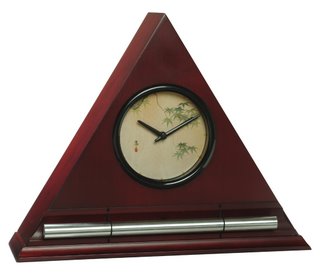 Chime Alarm Clock for a Progressive Awakening Now & Zen – The Zen Alarm Clock Shop
1638 Pearl Street
Boulder, CO 80302
(800) 779-6383
Posted in Natural Awakening, Progressive Awakening, sleep, Sleep Habits, wake up alarm clock, Well-being
 Orchid Sun Salutation
Perform asanas each time with a fresh mind and with a fresh approach.
1. Tadasana
Translation
Mountain Pose
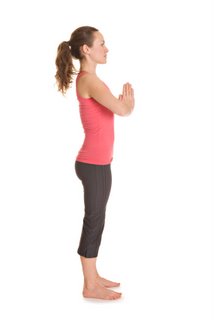 yoga mountain pose How to Do It
Stand with big toes touching, heels slightly apart. Create a straight line from ear to shoulder to hip to knee to heel. Relax your shoulders. Engage the legs; lift your kneecaps. Bring your hands together in front of your heart, keeping the collarbones and chest broad. Lift the crown of the head upward, as you take deep breaths in and out through your nose.
Modification
Stand with your feet hip-width apart, toes facing forward.
What It Does
Energizes the legs and focuses your attention, grounding you in the present moment.
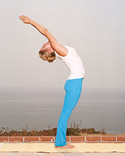 yoga upward hand pose 2. Urdhva hastasana
Translation
Upward Hand Pose
How to Do It
On an inhalation, sweep your arms out to your sides and bring the palms to touch up above your head, keeping your shoulders down. Reach through the sides of your body so your torso becomes long, gently bringing your gaze to your hands.
Modification
If you begin to feel compression in the shoulders, keep your hands 6 inches apart, palms facing each other, and look straight ahead.
What It Does
Opens the chest area and the lungs, increasing your lung capacity. “From the yogic perspective,” says Rea, “this pose activates the solar, or expansive, energy in your being.”
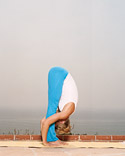 yoga forward bend 3. Uttanasana
Translation
Standing Forward Bend
How to Do It
As you exhale, sweep your arms out to the sides and bend at the hips to come into a deep forward bend. Bring your fingertips to the floor alongside your feet. Let your head gently release toward the floor.
Modification
If you feel tight in your hamstrings or lower back, bend your knees so that you can bring the fingertips to the floor, or rest your hands on blocks.
What It Does
Stretches the backs of the legs and lengthens the spine. “This bowing forward is the essence of the Sun Salutation,” Rea explains. “You are bowing to the perfection of our solar system — how we’re moving around the sun and how it forms the rhythm of our life.”
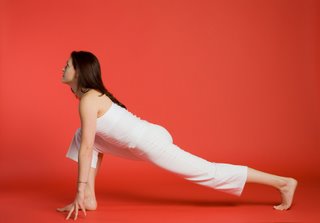 yoga lunge pose 4. Lunge Pose
How to Do It
Keeping your fingertips where they are, inhale and take a giant step back with the right foot. The left knee bends at a 90-degree angle. (Note: In your subsequent rounds of Sun Salutation, alternate the lunging leg to keep both sides of the body evenly balanced.)
What It Does
Opens the legs and pelvis; warms up and energizes the base of the body; elongates the spine.
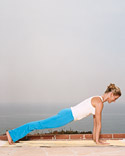 yoga plank pose 5. Plank Pose
How To Do It
As you exhale, bring your palms to the floor and step the left foot back to meet the right (a starting push-up position). Grip the mat with your fingers to take the weight off your wrists. Reach the top of your head forward and your heels back. Engage the abdominal muscles to come into one even line. Be careful not to let the hips either rise up higher than the lower back or sink down toward the floor.
What It Does
Activates the entire body; builds upper-body and core strength; creates heat; develops your sense of confidence and power.
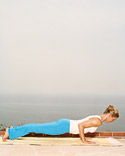 yoga four-limbed staff pose 6. Chaturanga Dandasana
Translation
Four-Limbed Staff Pose
How to Do It
At the end of an exhalation, bend your elbows straight back and lower your body down to the bottom of a push-up. Keep elbows close to your sides. Continue lengthening through the heels and the crown of the head to keep your entire body long and engaged, as you draw the navel in to activate your core muscles.
Modification
Lower the knees to the mat, coming into a modified push-up.
What It Does
This pose helps to build strength throughout the entire body. “Being strong is just as important as being flexible,” notes Rea.
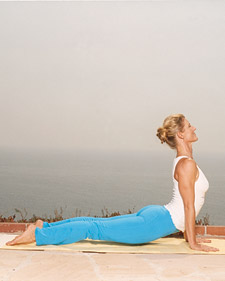 yoga upward facing dog 7. Urdhva mukha svanasana
Translation
Upward-Facing Dog
How to Do It
As you inhale, roll forward over your toes and straighten your arms. Your hips, thighs, and shins should all be off the floor. Press into the tops of your feet and palms, as you melt the heart forward past your arms. Gaze straight ahead.
Modification
Come into cobra pose instead: Rest hips and legs on the floor and straighten the arms comfortably, reaching the chest forward through the arms.
What It Does
Creates suppleness in the spine while opening the chest, lungs, and heart. So vital to our well-being, this area is frequently compromised by chronic bad posture. “Creating openness across the chest is strengthening and revitalizing,” explains Rea.
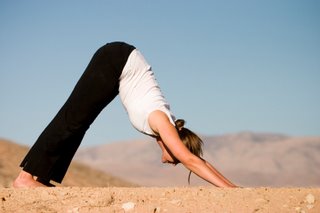 yoga downward facing dog pose 8. Aadho mukha svanasana
Translation
Downward-Facing Dog
How to Do It
As you exhale, roll back over the toes and lift the hips to come into an inverted V shape. Press your fingers into the mat and reach the thighs back, lengthening the sides of the body and the spine. Keep your shoulders down. Release the weight of your head.
Modification
If the hamstrings or lower back feel tight, bend your knees slightly. If you are unable to keep your arms straight, bring the knees to the floor and push back into Child’s Pose.
What It Does
Serves as a counterpose to Upward-Facing Dog; cools the mind; improves circulation.
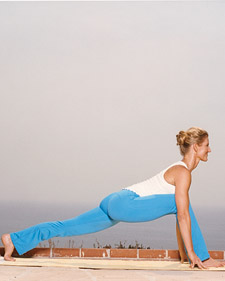 yoga lunge pose 9. Lunge Pose
How to Do It
As you inhale, step forward with the leg you initially stepped back with, coming back into Lunge pose. Keep your front knee at a 90-degree angle and your fingertips on either side of the front foot.
10. Uttanasana
How to Do It
Exhale and step your back foot forward; fold over your straightened legs, keeping your fingertips on the floor. Take a moment to notice whether your hamstrings or back muscles feel any looser than they did at the beginning of the cycle.
12. Tadasana
How to Do It
Exhale and float your arms back into prayer position. Keep the chest broad, the legs engaged, and the spine long as you enjoy the stillness of this pose. You can choose to end your session here or go on for another round.
Use our unique “Zen Clock” which functions as a Yoga Timer. It features a long-resonating acoustic chime that brings your meditation or yoga session to a gradual close, preserving the environment of stillness while also acting as an effective time signal. Our Yoga Timer & Clock can be programmed to chime at the end of the meditation or yoga session or periodically throughout the session as a kind of sonic yantra. The beauty and functionality of the Zen Clock/Timer makes it a meditation tool that can actually help you “make time” for meditation in your life. Bring yourself back to balance.
adapted from Body + Soul Magazine
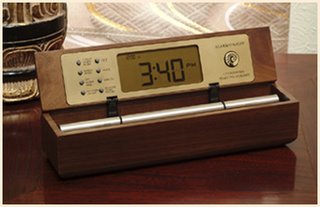 Digital Zen Yoga Timer in Walnut Finish Now & Zen’s Yoga Timer Store
1638 Pearl Street
Boulder, CO 80302
(800) 779-6383
Posted in Bamboo Chime Clocks, Chime Alarm Clocks, Japanese Inspired Zen Clocks, Yoga Timer, Yoga Timers by Now & Zen
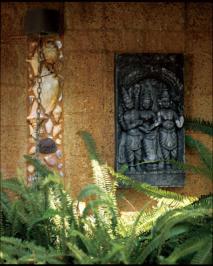 creating a sacred space in your garden “According to mystics, spaces aren’t sacred because of their location but because of all the prayers said on that land,” Chris Prelitz says. He offers these tips for creating sacred space outdoors.
• Find a place that’s quiet and peaceful. “Your best clue is to notice where your cats hang out,” Chris notes.
• Transform an ugly spot. Damaged land offers an opportunity for healing. Spending time in meditation and prayer at a certain place helps sanctify it.
• Remind yourself of your oneness with Creation. Place statues, art, water, candles, crystals, or stones engraved with inspiring words in your garden.
• Make places to rest. Place a chair or bench in a comfortable spot, then sit quietly. Spend time “being” rather than doing. Set your Zen Timepiece for a 20 minute meditation.
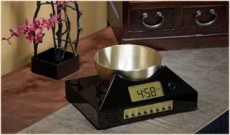 Zen Timepiece, tibetan singing bowl timer and clock • Create ceremonies. Burn incense or sage. Write your prayers and intentions on colorful strips of paper and bury them or tie them to branches. Plant a tree as part of a ceremony. Host a wedding. Start a garden meditation circle with family and friends.
Use our unique “Zen Clock” which functions as a Yoga and Meditation Timer. It features a long-resonating acoustic chime that brings your meditation or yoga session to a gradual close, preserving the environment of stillness while also acting as an effective time signal. Our Yoga Timer & Clock can be programmed to chime at the end of the meditation or yoga session or periodically throughout the session as a kind of sonic yantra. The beauty and functionality of the Zen Clock/Timer makes it a meditation tool that can actually help you “make time” for meditation in your life. Bring yourself back to balance.
adapted from Natural Home Magazine, June/July 2005 by Marsha Scarbrough
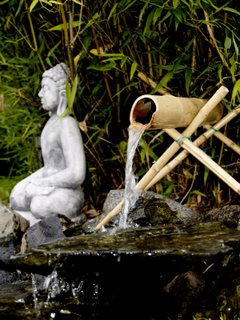 stillness in the garden Now & Zen’s Singing Bowl Timer Store
1638 Pearl Street
Boulder, CO 80302
(800) 779-6383
Posted in Bamboo Chime Clocks, Chime Alarm Clocks, Japanese Inspired Zen Clocks, mindfulness practice, Now & Zen Alarm Clocks, Well-being
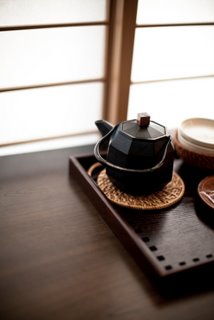 drink more tea Drink more tea.
When the whole Starbucks craze started, I always felt left out when my girlfriends wanted to meet for coffee because while I love the aroma of fresh brewed coffee, the taste makes me gag and cringe. But then a friend turned me onto hot tea, and things have never been the same since.
I love hot tea for many reasons. For one, it has turned out to be my herbal Xanax. It calms me when I’m feeling anxious, and comforts me when I’m having a rough day. I’m known for being freezing cold at all times, so I enjoy holding a hot mug while reading a book or people watching. These are all of my emotional reasons for drinking tea, but here are 10 health reasons to make the switch!
- Tea contains antioxidants that protect your body from the ravages of aging and the effects of pollution.
- Tea has less caffeine than coffee. An eight-ounce cup of coffee contains around 135 mg caffeine; tea contains only 30 to 40 mg per cup. If drinking coffee gives you the jitters, causes indigestion or headaches or interferes with sleep — switch to tea.
- Tea may reduce your risk of heart attack and stroke. Drinking tea may help keep your arteries smooth and clog-free, the same way a drain keeps your bathroom pipes clear.
- Tea protects your bones. It’s not just the milk added to tea that builds strong bones. One study that compared tea drinkers with non-drinkers, found that people who drank tea for 10 or more years had the strongest bones, even after adjusting for age, body weight, exercise, smoking and other risk factors.
- Tea gives you a sweet smile. Tea itself actually contains fluoride and tannins that may keep plaque at bay. So add unsweetened tea drinking to your daily dental routine of brushing and flossing for healthier teeth and gums.
- Tea bolsters your immune defenses. Drinking tea may help your body’s immune system fight off infections.
- Tea protects against cancer. Thank the polyphenols, the antioxidants found in tea, once again for their cancer-fighting effects.
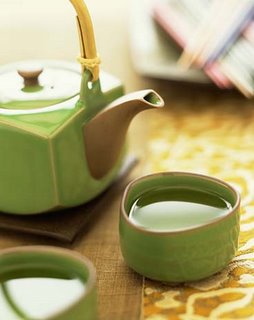 tea
- Tea helps keep you hydrated. The only time the caffeine becomes a problem as far as fluid is concerned is when you drink more than five or six cups of a caffeinated beverage at one time.
- Tea is calorie-free. Tea doesn’t have any calories, unless you add sweetener or milk. If you’re looking for a satisfying, calorie-free beverage, tea is a top choice.
- Tea increases your metabolism. Green tea has been shown to actually increase metabolic rate so that you can burn 70 to 80 additional calories by drinking just five cups of green tea per day. Over a year’s time you could lose eight pounds just by drinking green tea. Of course, taking a 15-minute walk every day will also burn calories.
People frequently wonder which tea is better – green, black, or white? To be honest with you, there really isn’t enough difference to get overly excited about. All teas generally contain the same amount of flavonoids. Green and black teas come from the same plants, but green tea is dried for a shorter time and doesn’t go through a fermenting process used for black tea.
“The Zen Alarm Clock & Chime Timer’, uses soothing acoustic chimes that signal it’s time – gently and gradually.
Rather than an artificial recorded sound played through a speaker, the Zen Clock features an alloy chime bar similar to a wind chime. When the clock’s alarm is triggered, its chime produces a long-resonating, beautiful acoustic tone reminiscent of a temple gong.
adapted from Ode Magazine, Feb. 2009
 Digital Zen Alarm Clock, a perfect tea timer Now & Zen’s Chime Timer Store
1638 Pearl Street
Boulder, CO 80302
(800) 779-6383
Posted in Bamboo Chime Clocks, Japanese Inspired Zen Clocks, Zen Timers
 Toyokuni Utagawa, Flower Arrangement By skillfully managing your attention, you’re able to both experience life in a balanced way and stay oriented in a positive, productive direction. John Milton might have been thinking of the power of focus when he wrote: “The mind is its own place, and in itself / Can make a heav’n of hell, a hell of heav’n.”
Like consciousness or mind, attention is a complex neurological and behavioral business. There’s no tidy “attention center” in the brain. Instead, an ensemble of alerting, orienting, and executive networks collaborate to attune you to what’s going on in your inner or outer world in a coherent way that points you toward an appropriate response.
Along with performing the Apollonian task of organizing your world, attention enables you to have the kind of Dionysian experience beautifully described by the old-fashioned term rapt—completely absorbed, engrossed, fascinated, perhaps even “carried away”—that underlies life’s deepest pleasures, from the scholar’s study to the carpenter’s craft to the lover’s obsession. Some individuals slip into it more readily, but research shows that with some reflection, experimentation, and practice, all of us can cultivate this profoundly attentive state and experience it more often.
Considering attention’s importance, it’s surprising that until recently, science has come up with few strategies to improve it. Most new strategies have a “back to the future” quality derived from their origin in meditation, secularized and made amenable to scientific study. These cognitive regimens can strengthen attention and are both free and safe, all of which must appeal to the 78 million baby boomers and their aging children, who are equally concerned about maintaining their mental and physical health.
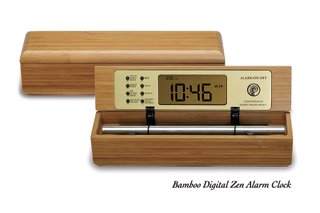 Bamboo Alarm Clocks & Meditation Timers Deciding what to pay attention to for this hour, day, week, or year, much less a lifetime, is a peculiarly human predicament, and your quality of life largely depends on how you handle it. Moses got his focus from God; Picasso from his nearly supernatural creativity. We have other motivations and gifts, and most of us have to go through a more complicated process to find the right things to focus on. We must resist the temptation to drift along, reacting to whatever happens to us next, and deliberately select targets, from activities to relationships, that are worthy of our finite supplies of time and attention.
Perhaps the most important thing I’ve learned is that it shouldn’t take a crisis to show you that your life is the sum total of what you focus on or to make you question that your well-being depends on what happens to happen to you. After running that tough experiment, however, I have a plan for the rest of my life. I’ll choose my targets with care—writing a book or making a stew, visiting a friend or looking out a window—then give them my rapt attention. In short, I’ll live the focused life, because it’s the best kind there is.
Excerpted from Utne Reader, March/April 2010 from the book Rapt: Attention and the Focused Life by Winifred Gallagher
Although meditation can be done in almost any context, practitioners usually employ a quiet, tranquil space, a meditation cushion or bench, and some kind of timing device to time the meditation session. Ideally, the more these accoutrements can be integrated the better. Thus, it is conducive to a satisfying meditation practice to have a timer or clock that is tranquil and beautiful. Using a kitchen timer or beeper watch is less than ideal. And it was with these considerations in mind that we designed our digital Zen Alarm Clock and practice timer. This unique “Zen Clock” features a long-resonating acoustic chime that brings the meditation session to a gradual close, preserving the environment of stillness while also acting as an effective time signal.
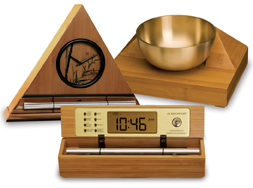 Zen Alarm Clocks with Chimes & Singing Bowls Now & Zen’s Chime Timer and Alarm Clock Store
1638 Pearl Street
Boulder, CO 80302
(800) 779-6383
Posted in Chime Alarm Clocks, Japanese Inspired Zen Clocks, Meditation Timers, Meditation Tools, Natural Awakening, Now & Zen Alarm Clocks
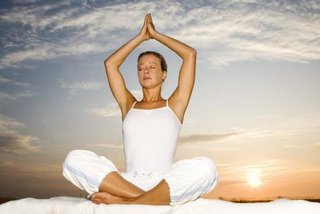 yoga To find a yoga style that jibes with you, first consider whether your intentions are mainly physical, emotional, or spiritual, says Hansa, president of Yoga Alliance, an organization that registers yoga teachers nationwide. (She uses only one name.) Some people practice yoga for strength and flexibility, some crave relaxation, and some seek a connection with a higher power. (Some want all four.) There is no right or wrong reason to practice yoga, but different styles fulfill different needs. Just as if you were placing a personals ad, you need to think about what you want before you get started.
class consciousness
Yoga’s popularity has exploded of late—18 million Americans now regularly twist themselves into pretzels, more than double the number in 1997. But the sheer variety of classes to choose from can be daunting. Here’s a primer to help you decide what’s right for you.
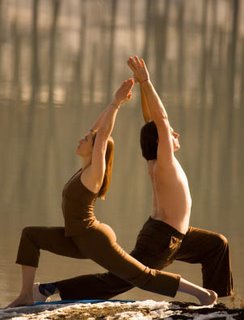 partner yoga ananda
founder: Swami Kriyananda
What it is: A gentle approach to postures, ananda yoga emphasizes calming the mind in preparation for meditation. Holding the postures is said to create self-awareness, and affirmations are often incorporated to enhance the poses.
Sign on if: You’re looking for a deeply spiritual experience that also builds strength and balance.
For more information: www.expandinglight.org
ashtanga
founder: K. Pattabhi Jois
What it is: The foundation of many “power yoga” or “power flow” classes, this fast-moving series of breath work and sweat-inducing poses is said to purify the mind and body. The room isn’t heated, but you’ll sweat anyway.
Sign on if: You like pushing your muscles to the max and conquering new heights of cardio endurance.
For more information: www.ayri.org
anusara
founder: John Friend
What it is: A dual focus on principles of alignment and physical expressiveness gives practitioners an in-depth understanding of the poses as well as a strong dose of spirituality. Although physically challenging, the style emphasizes accepting each student’s abilities.
Sign on if: You seek a physical and spiritual workout and are internally driven.
For more information: www.anusara.com
bikram
founder: Bikram Choudhury
What it is: Known as “yoga to the stars” because of its popularity in Hollywood, Bikram consists of a 90-minute series of 26 poses. Ideally, classrooms are heated to 105 degrees with 60 percent humidity to facilitate stretching and loosening of muscles and tendons.
Sign on if: You have a high tolerance for heat and respond well to a highly charged, athletic environment.
For more information: www.bikramyoga.com
iyengar
founder: B.K.S. Iyengar
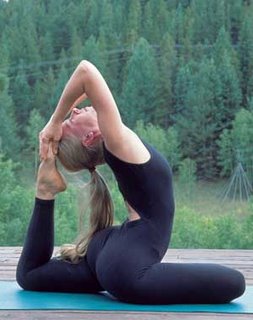 yoga What it is: Precision, alignment, and symmetry are key elements of an Iyengar class. Postures are held up to five minutes to build strength and encourage deep release. Props, such as blocks, belts, and blankets, help students hold difficult poses, but can also create a start-and-stop pace that some people don’t like.
Sign on if: You’re a detail-oriented person who likes to get things right, no matter how long it takes.
For more information: www.bksiyengar.com
kripalu
founder: Swami Kripalvananda
What it is: Slow-paced classes focus on creating an emotionally and physically safe learning environment. Offers a strong emphasis on mind-body integration.
Sign on if: Relaxation is just as important to you as building strength and increasing flexibility.
For more information: www.kripalu.org
kundalini
founder: Sikh master Yogi Bhajan
What it is: The focus is on freeing energy by awakening kundalini, the coiled energy located at the base of the spine. Despite its sexy reputation, kundalini emphasizes breathing exercises and chanting in lieu of a more physical practice.
Sign on if: The spiritual and emotional dimensions of yoga interest you more than getting a workout.
For more information: www.3HO.org
viniyoga
founder: T.K.V. Desikachar
What it is: A gentle style that incorporates asanas, chanting, breathing practices, and meditation, Viniyoga focuses on an individual’s needs and abilities.
Sign on if: You’re looking for a supportive and nurturing environment where your limitations are taken into consideration in each asana. Especially good for people with chronic health problems.
Use our unique “Zen Clock” which functions as a Yoga Timer. It features a long-resonating acoustic chime that brings your meditation or yoga session to a gradual close, preserving the environment of stillness while also acting as an effective time signal. Our Yoga Timer & Clock can be programmed to chime at the end of the meditation or yoga session or periodically throughout the session as a kind of sonic yantra. The beauty and functionality of the Zen Clock/Timer makes it a meditation tool that can actually help you “make time” for meditation in your life. Bring yourself back to balance.
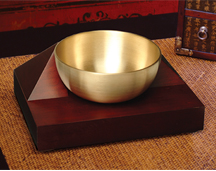 Singing Bowl Yoga Timer excerpted from Natural Solutions, June, 2003 by Catherine Guthrie
 Meditation & Yoga Timers and Clocks Now & Zen’s Yoga Timer
and Chime Alarm Clock
Store
1638 Pearl Street
Boulder, CO 80302
Posted in Chime Alarm Clocks, Japanese Inspired Zen Clocks, Meditation Timers, Meditation Tools, Now & Zen Alarm Clocks, Yoga Timer
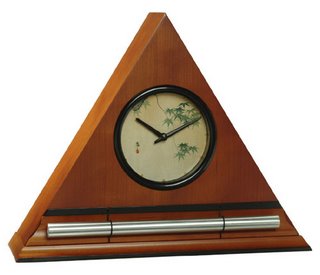 Honey Japanese Maple Leaves Zen Alarm Clock, calming alarm clock useful for remembering one's dreams Steve McIntosh is one of those spiritually driven achievers whom marketers define as part of the “cultural creatives” demographic group. He doesn’t shy away from that label; in fact, he believes that group is on the cultural frontier, making changes in their own lives that will influence our future.
It’s a movement that is going beyond materialism, but still expresses itself with certain material goods. “I want to be part of that culture. I want to express an aesthetic that would capture the mood of the time like the Tiffany lamp expressed the Art Nouveau culture prior to World War I,” McIntosh said.
The former investment banker and lawyer headed the Celestial Seasonings tea company, where, he said, he saw “how a brand can affect American culture.”
In the mid- 1990s, McIntosh was ready to set out on his own. “I wanted to create a line of consumer electronics that would use natural sounds, acoustic sounds that were housed in wood cases rather than plastic,” he said.
In 1996 in Boulder, Colo., he began his company Now & Zen, making the Zen Alarm Clock, (shown below, $119.95) a clock that emits chimes at intervals, and more recently introducing the Tibetan Phone Bell (shown above, $119) on the same principle — that sound should be beautiful and gentle.
His products “exemplify an aesthetic that combines elements of Zen, sacred geometry, classical Greece,” he said.
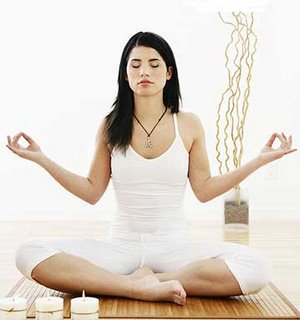 zen The clock wakes the sleeper up with an initial chime, followed in 3 1/2 minutes by another, then in smaller intervals until it sounds each four seconds. That interval allows the sleeper to conclude a dream before waking, according to Now & Zen literature.
“Instead of jerking, you get this buffer between sleeping and waking that gives you your consciousness,” he said.
The Tibetan Phone Bell, which features a brass bowl from Asia, “replaces the artificial sound of a phone ringing,” McIntosh said. “Those electric sounds cause stress.”
The sounds of both products are based on an esoteric tradition that dictates what frequencies are most soothing to humans, he said.
Hardcore materialists may laugh, he said, but many people find the Zen Alarm Clock and the Phone Bell pleasant.
“You don’t have to be a Buddhist to appreciate an esthetically beautiful phone,” he said.
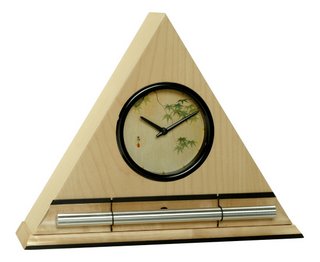 Zen Alarm Clock in Maple Finish, Japanese Leaves Dial Face, harmony in design Now & Zen products are available at the Elephant Pharmacy in Berkeley; Planet Weavers Treasure, Zen Center Book Shop, Walden’s and the Tibet Shop in San Francisco; Body Wise and Siamese Dream in San Rafael; and Milk & Honey in Sebastopol or online at www.now-zen.com.
Excerpted from San Francisco Chronicle, March 2004 by Laura Thomas
 The Zen Clock Showroom Now & Zen – The Zen Alarm Clock Store
1638 Pearl Street
Boulder, CO 80302
(800) 779-6383
Posted in Chime Alarm Clocks, Japanese Inspired Zen Clocks, Meditation Timers, Meditation Tools, mindfulness practice, Natural Awakening, Now & Zen Alarm Clocks, Progressive Awakening, Uncategorized
 Portable Zen Alarm Clock for Small Spaces 1. Reduce your need for space.
■ Cut back on how much you own.
■ Install small appliances.
■ Put space where you need it, not where you don’t (who needs a big room if it’s just for sleep?).
2. Design storage for your needs.
■ Use vertical space (for example, book-shelves above windows or high on walls, and floor-to-ceiling storage).
■ Waste no space (for example, put storage under stairs, drawers in stair risers and shelves in stud space).
3. Expand space via design.
■ Keep spaces neither too open nor too chopped up.
■ Let in plenty of natural light.
■ Align furniture along a diagonal. Draw a line between opposite corners of a room and orient seating so people often look from corner to corner—long views makes rooms feel bigger.
■ Use light colors, and use various colors or shades of paint to differentiate spaces (variety helps expand space, as long as it’s not too broken up).
■ Incorporate many outdoor living spaces and let the home open to them naturally.
■ Let in light with ceiling-height windows.
■ Build in furniture (for example, a dining booth requires less space than a table and chairs does).
4. Make things and spaces multifunctional.
■ A dining table can convert into an office desk or crafts table with proper storage nearby.
■ Consider foldaway furniture (for example, a Murphy guest bed, or a fold-up or sunken dining table).
■ Let furniture such as bookcases or headboards double as room dividers.
adapted from Natural Home Magazine, November/December 2010
 digital zen alarm clocks for small spaces Now & Zen – The Zen Alarm Clock Store
1638 Pearl Street
Boulder, CO 80302
(800) 779-6383
Posted in intention, mindfulness practice
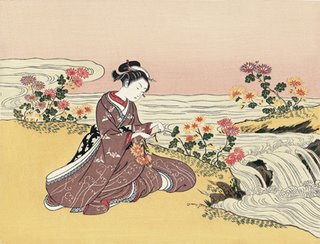 Harunobu Suzuki, A girl Collecting Chrysanthemums by a Stream The courage to witness
Ancient contemplative practices have long understood the nature of mind as something that pushes away pain and clings to pleasure. But if you’re like most people, you probably didn’t begin yoga or meditation intent on acquiring tools to help relieve your suffering. Instead you’ve been waiting for the moment when you could balance on your head or sit without fidgeting on your meditation cushion. Then one day in a yoga class, you realize that you don’t hear your usual internal dialogue bemoaning your inherently stiff hamstrings or comparing your abilities to everyone else’s. Instead, you are aware of your breathing, and you begin to notice the subtle feelings within your body as you practice. You’ve been tuning into what’s happening as it is, in fact, happening. You have been practicing mindfulness.
Stay Present
These three simple tips can be practiced under everyday circumstances so that when you find yourself faced with intense situations, like grief, the skills may have already taken root.
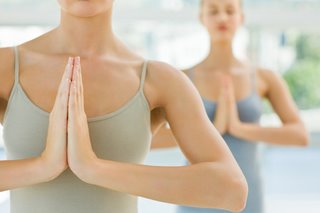 Yoga
Smoothing the breath
The breath and the mind travel in tandem. When the breath gets agitated, the mind cannot settle. By bringing attention into the breath, the mind is naturally soothed. For five minutes a day, sit quietly and simply pay attention to the path of the breath in and out of the nose as you soften the tongue and release the jaw. Allow thoughts to come and go, but continuously bring your focus back to the breath.
Dropping in
The body reflects our physical, emotional, and mental states. For instance, joy spontaneously lightens the step and softens the face, whereas depression can cause the shoulders and chest to collapse down. At random moments when you think of it through the course of each day, just check in with your physical state. Make note of your physical feelings and sensations and the quality of your breath. Then consider what thought or circumstance might be contributing to that experience.
Being kind
When others offer you kindness, responding congenially comes easily. But when others act unhappy, angry, or distant, being kind proves more difficult. The easy path? Responding with an equally charged emotion, or simply leaving the person alone to suffer. When unpleasant situations with others arise, experiment with making no assumptions about why they behave as they do. Simply offer kind support—without the desire that your act of compassion will change the situation or benefit you.
Although meditation can be done in almost any context, practitioners usually employ a quiet, tranquil space, a meditation cushion or bench, and some kind of timing device to time the meditation session. Ideally, the more these accoutrements can be integrated the better. Thus, it is conducive to a satisfying meditation practice to have a timer or clock that is tranquil and beautiful. Using a kitchen timer or beeper watch is less than ideal. And it was with these considerations in mind that we designed our digital Zen Alarm Clock and practice timer. This unique “Zen Clock” features a long-resonating acoustic chime that brings the meditation session to a gradual close, preserving the environment of stillness while also acting as an effective time signal.
Excerpted from Natural Solutions, January 2007 by Mary Taylor
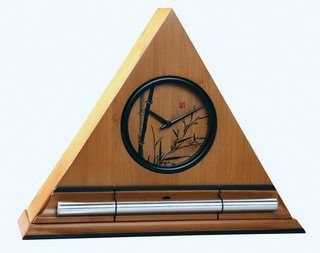 Bamboo Zen Clocks, progressive chime clock and timer
Now & Zen’s Meditation Timer Store
1638 Pearl Street
Boulder, CO 80302
(800) 779-6383
Posted in Chime Alarm Clocks, intention, Japanese Inspired Zen Clocks, Meditation Timers, Meditation Tools, mindfulness practice, Now & Zen Alarm Clocks, Well-being
 Shinsui Itō, Before a Mirror (1916) Ukiyo-e People in need of a creative boost should take a long nap, according to new research highlighted by ScienCentral. The researchers found that naps increase people’s ability to solve problems creatively, but only if the nap includes REM, the deep sleep when dreams occur. REM sleep happens only after about an hour of sleeping, so a long nap is recommended. According to researcher Sara Mednick, “if you take a nap with REM sleep, you’re actually going to be boosting your ability to make these new associations in creative ways.” Mednick has tried to put her findings to good use by taking a nap at least three times each week. A good way to peacefully end your nap is to use your Zen Alarm Clock with progressive chimes.
adapted from Utne.com by Bennett Gordon, September 2009
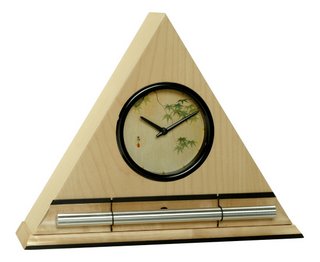 Zen Alarm Clock in Maple Finish with Maple Leaves Dial Face and Chime Now & Zen – The Zen Alarm Clock Store
 Set Your Gentle, Chime Alarm Clock -- The Zen Alarm Clock Shop 1638 Pearl Street
Boulder, CO 80302
(800) 779-6383
Posted in Bamboo Chime Clocks, Chime Alarm Clocks, Japanese Inspired Zen Clocks, mindfulness practice, Natural Awakening, Now & Zen Alarm Clocks, Progressive Awakening, Sleep Habits, Ukiyo-e, Well-being
|
|
|
|